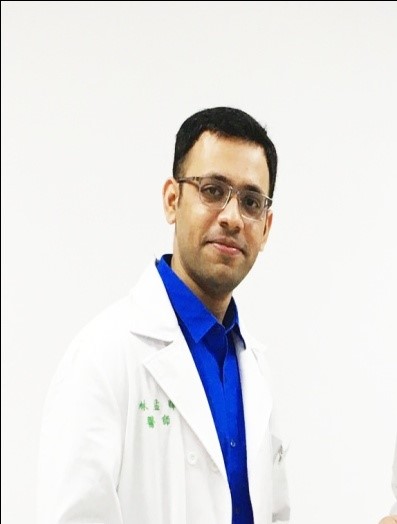What is Hernia Surgery - Hernia Surgery Cost | Hiatus Hernia Laparoscopic Hernia Surgery | Inguinal Hernia Surgery | Hiatus hernia Surgery | Best Doctor for hernia Surgery | Best Hospital for hernia Surgery | Blood in Urine in Post Hernia Surgery | Best Doctor for Hernia Surgery
Dr. Ashish Vashistha
MBBS, MS, FNBE (MAS), Head Department of Surgery Senior Consultant Laparoscopic & Bariatic (Obesity) Surgeon
20 Years Experience
Dr. Vashistha is a renowned senior Bariatric and advanced Laparoscopic surgeon in India with over 20 years....
Dr. Dr. Karan Rawat
MBBS MS FMAS DMAS FICRS FIAGES
Ex Attending Consultant Nayati Hospital - Mathura UP Ex Attending Consultant Max Healthcare Patparganj - Delhi Ex Attending Professor Sharda Hospital Noida Safe Surgery Center Civil Lines Surgery - Agra Years Experience
Advanced Laproscopic/ Robotic/ Bariatric/General Surgeon Safe Surgery Center Civil Lines Agra
Dr. Dr Ankit Potdar
MBBS, MS (Surgery), FMAS, FALS,FMAS(AMASI) DIPLOMA IN THORASIC SURGERY , DIPLOMA IN OESOPHEGEAL SURGERY From NUTH, TAIWAN. FELOWSHIP IN SINGLE PORT SURGERY. Department of Surgery, GLOBAL Hospital, parel, Mumbai
Junior consulatant in Global hospital, mumbai. Fellow in National taiwan university hospital, taiwan. Ex Assistant professor in MGM medical college , Navi Mumbai. Consualtant Laparoscopic surgeon in various nursing hospital in Mumbai. Years Experience
Special Interests - Single port surgery, Advanced laproscopic GI surgery, Thorasic and Oesophageal surgery. Intern (Rotatory posting in all departments) - Bhatia Hospital, Tardeo, Mumbai Resident - Medical officer in Holy family hospital, Bandra, Mumbai. ICU incharge in Siddharth hospital, Goregaon,....
What is hernia?
A hernia occurs when there is a weakness or hole in the muscular wall that usually keeps abdominal organs in place. This muscular wall is called the peritoneum. This defect in the peritoneum allows organs and tissues to push through, or herniate, producing a bulge.
Hernias can be found in the following areas
- Groin - a femoral hernia gives a bulge just below the groin (more common in women); an inguinal hernia (more common in men) is a bulge in the groin that may reach the scrotum
- Upper part of the stomach - hiatal or hiatus hernia is the upper part of the stomach pushing up out of the abdominal cavity and into the chest cavity via an opening in the diaphragm
- Belly button - a bulge around here is produced by an umbilical hernia
- Surgical scar - past abdominal surgery can lead to an incisional hernia through the operational scar.




Causes of hernia
With the exception of an incisional hernia (a complication of abdominal surgery), in most cases, there is no obvious reason for a hernia to occur. The risk of hernia increases with age and hernia occurs more commonly in men than in women.
A hernia can be congenital - present at birth - or develop in children who have a weakness in their abdominal wall.
Activities and medical problems that increase pressure on the abdominal wall can lead to a hernia.
These include:

- Straining on the toilet (due to long-term constipation, for example)
- Persistent cough
- Cystic fibrosis
- Enlarged prostate
- Straining to urinate
- Being overweight or obese
- Abdominal fluid
- Lifting heavy items
- Peritoneal dialysis
- Poor nutrition
- Smoking
- Physical exertion
Symptoms of hernia
In many cases, hernia is no more than a painless swelling that remains asymptomatic, presenting no problems and needing no immediate medical attention.
Hernia may, however, be the cause of discomfort and pain, with symptoms often becoming worse when standing, straining, or lifting heavy items.
In some cases, hernia necessitates immediate surgery, such as when part of the gut becomes obstructed or strangulated by an inguinal hernia.
Immediate medical attention should be sought if an inguinal hernia produces acute abdominal complaints such as:
- Pain
- Nausea
- Vomiting
The swelling in these cases is typically firm and tender and cannot usually be reduced back up into the abdomen.
Hiatal hernia can produce symptoms of acid reflux, such as heartburn which is caused by stomach acid getting into the esophagus.
Tests and diagnosis of hernia
The diagnosis of a hernia is usually simple - the doctor will often be able to see it and palpate for it.
While the doctor is feeling for the hernia, you may be asked to bend or move, or to cough, as this can enlarge the bulge.
Treatment of hernia
Although surgical options depend on individual circumstances, including the location of the hernia, there are two main types of surgical intervention for hernia:
- Open surgery
- Laparoscopic operation (keyhole surgery)
Open surgical repair closes the hernia using sutures, mesh, or both, and the surgical wound in the skin is closed with sutures, staples, or surgical glue.
Laparoscopic repair is the treatment of choice these days although it is little expensive, is less likely to cause complications such as infection.
Surgical repair of a hernia guided by a laparoscope allows for the use of smaller incisions, enabling a faster recovery from the operation.
The hernia is repaired in the same way as in open surgery but is guided by a small camera and a light introduced through a tube.5 Surgical instruments are introduced through a further small incision. The abdomen is inflated with gas to improve visualization and space and the whole operation is performed under general anesthetic.

Benefits of Laparoscopic Hernia repair
- It gives best cosmetic results, and leaves no scars
- The recovery time is less
- Least surgical pain
- Patient can resume daily activity after a week
- Vomiting
- Vomiting
- Vomiting
Disadvantages of Laparoscopic Hernia repair
- Not ideally suited for complex Hernia cases
- Higher chances of re-occurrence, unless surgery is carried out perfectly by highly trained surgeon
Dr Ashish vashistha is one of the best trained & accredited senior laparoscopic surgeon who performs laparoscopic hernia repair surgeries in Max hospitals Saket and Gurgaon.



